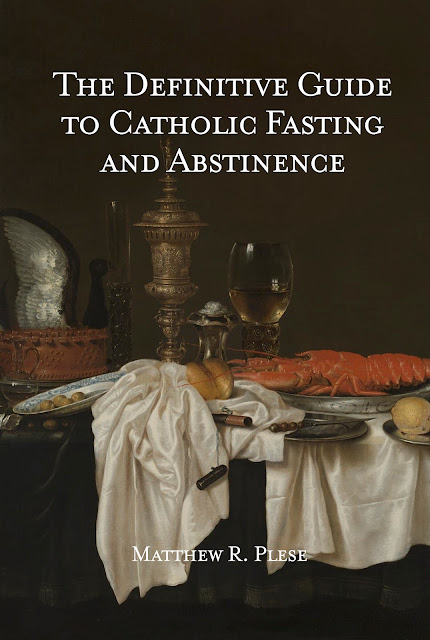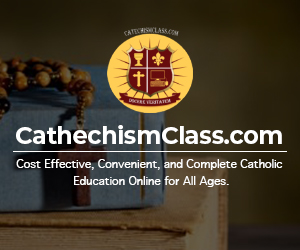For Traditional Catholics seeking to preserve the venerable customs of penance and prayer, the question naturally arises in 2025: Since July 4th falls on a Friday this year, are we still obligated to abstain from meat?
In today’s Church, the answer would be no—abstinence on Fridays outside of Lent is only “especially recommended,” not required. But for those who strive to maintain the immemorial practices of the Church, the answer lies in a deeper look at history, law, and the exceptions once granted for civil holidays like Independence Day.
Traditional Law: Friday Abstinence Is the Norm
From the earliest centuries, Friday abstinence was a universal precept. As a weekly commemoration of the Passion of Our Lord, it was required throughout the year. This obligation continued with few interruptions until modern times. Even into the 20th century, the 1917 Code of Canon Law mandated abstinence from meat on all Fridays of the year unless a Holy Day of Obligation occurred on that day outside of Lent. Before, even Fridays that were Holy Days of Olbligation still required abstinence, Christmas Day being the only exception.
Importantly, July 4th—the United States' Independence Day—has never been a Holy Day of Obligation. Thus, under traditional law, it remained a day of required abstinence whenever it fell on a Friday.
The 1931 Indult for Civil Holidays
However, a notable exception was introduced in 1931. Cardinal Fumasoni Biondi, Apostolic Delegate to the United States, communicated a special indult from Pope Pius XI allowing American bishops, ad quinquennium (for five years), to dispense from the laws of fasting and abstinence on civil holidays. As he wrote:
“The Sacred Congregation of the Council, in a letter dated 15 Oct 1931, informs me that, in view of the difficulties experienced by the faithful in observing the laws of fast and abstinence on civil holidays, His Holiness, Pius XI... granted to all the Ordinaries of the United States... the faculty to dispense their subjects from the laws in question whenever any of the civil holidays now observed occurs on a day of fast and abstinence, or of abstinence.”
This privilege, while notable, was:
- Temporary: It lasted only five years unless renewed.
- Discretionary: Bishops could exercise this faculty but were not required to.
- Not self-executing: The faithful could not assume they were dispensed unless their bishop officially declared it.
Even into the 1950s and early 1960s, bishops selectively used this privilege. Some issued formal dispensations when a civil holiday fell on a Friday (e.g., the day after Thanksgiving), but others did not.
Independence Day: No Permanent Dispensation
There was never a permanent, universal dispensation from Friday abstinence for the Fourth of July.
Unlike myths surrounding the so-called “turkey indult” for the day after Thanksgiving, there is no documented perpetual exemption for meat consumption on Independence Day—even under Pope Pius XII or John XXIII. Any dispensation from Friday abstinence on July 4th had to be granted explicitly by the local bishop and typically appeared in diocesan announcements or parish bulletins.
Furthermore, by 1962—the benchmark year for many traditional Catholics—the universal law was still clear: unless July 4th was a Holy Day of Obligation (which it was not), or unless a specific diocesan dispensation was announced, the law of abstinence applied.
What Changed After Vatican II?
With Paenitemini in 1966, Paul VI allowed bishops’ conferences to substitute other forms of penance for Friday abstinence. The U.S. bishops followed suit, and Friday abstinence became “especially recommended,” but no longer binding under pain of sin outside of Lent.
This relaxation, coupled with the dramatic reduction in fasting days, has contributed to a massive weakening of Catholic penitential identity. But for those attached to the Traditional Latin Mass and the older calendar, fidelity to the traditional norms remains a vital part of living the liturgical life.
So, What Should a Traditional Catholic Do on Friday, July 4, 2025?
Unless a competent traditional priest or bishop explicitly dispenses the faithful from abstinence, the traditional law remains binding. Independence Day—though a civic holiday—is not a feast of the Church, and it has never been granted a permanent exception. Thus, traditional Catholics should abstain from meat on Friday, July 4th, 2025.
This act of penance is not a rejection of patriotism but a higher form of devotion: honoring the sacred customs of the Church above the shifting preferences of modernity.
Recovering a Lost Rhythm
Throughout the past two centuries, Catholic discipline in America has steadily waned. From a time of over 30 Holy Days of Obligation, year-round Saturday abstinence, and strict fasting regulations, we now find ourselves with a minimal observance required under current law.
But as St. Francis de Sales wisely said, “If you’re able to fast, you will do well to observe some days beyond what are ordered by the Church.”
For those who long to recover the rhythm of Catholic life, the solution lies not in waiting for mandates, but in choosing to voluntarily embrace tradition. This July 4th, let us abstain from meat, pray for our nation, and offer up our penance for the conversion of America and the restoration of Catholic order.
Want to learn more about the history of fasting and abstinence? Check out the Definitive Guide to Catholic Fasting and Abstinence.
















.jpg)
.png)









